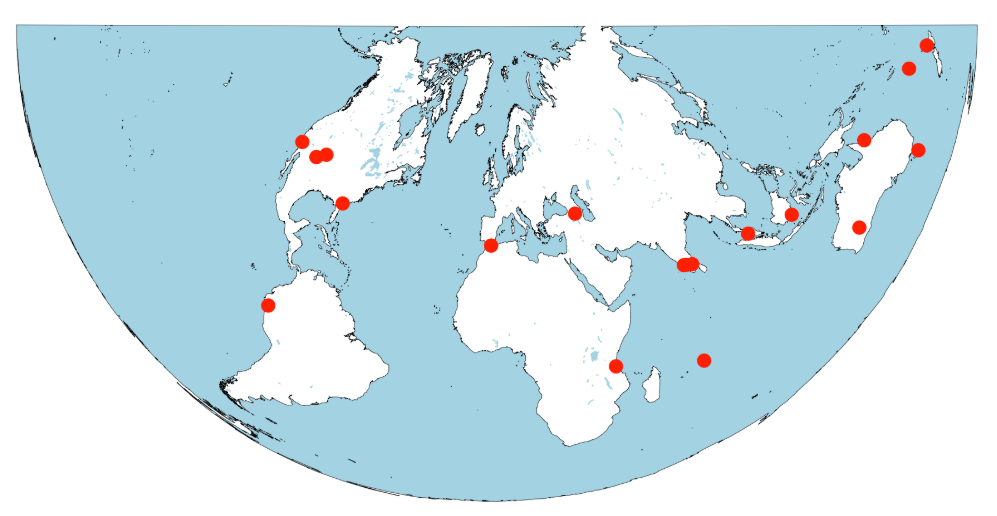Dr Christina Walters, Supervisory Plant Physiologist at the National Laboratory for Genetic Resource Preservation (NLGRP), Fort Collins, Colorado, kindly agreed to share her reaction to the recent paper Seeds and the Art of Genome Maintenance. If you leave a question or comment here, I’ll make sure to pass it on, and I’m sure Christina will respond.
I thought I would take a few moments to interpret this paper in the context of what we in Fort Collins do for the National Plant Genetic System effort (at least in terms of orthodox seeds, as is the topic of the Waterworth et al. review). Many of you are collaborating with us on studies of seed germination or longevity, and it would be interesting to know work happening independent of Fort Collins and how you interpret this paper relative to your own work.
Frontiers caters to a general plant biology audience, and so the Waterworth et al. review might not emphasize the critical distinction between seed germination and longevity that is needed for seed bank practitioners. Germination reflects a transition from dry seed to hydrated seedling. This is what our seed analysts measure upon receipt of seeds and during seed storage. Longevity, on the other hand, is a time or a rate parameter; how long can a seed be stored and still maintain its ability to germinate? Crudely speaking, seed germination tells us if the accession is dead yet. But, the more useful information — for NLGRP and maybe for you — is when the accession will die so we can warn you that the accession needs to be regenerated soon. Like climate change, seed longevity is either a prediction or something that can be described after-the-fact. Curve-fitting routines that describe decay after it has occurred might contribute to making predictive models if we can understand how variables contribute to the shape. What we really need are models that reliably predict longevity or describe how much error we can expect beyond the limits of inference of the model. To that end, many of us are seeking to answer (1) why do preserved seeds lose viability? and (2) what causes the high variation in seed longevity among species, individuals and even tissues within seeds? Some focus these questions further into what lesion(s) lead to mortality and whether these are general or specific. Waterworth and colleagues are known for their research on oxidative damage to the genome and subsequent repair, and so we’d expect them to show a little bias about the primary role of DNA damage and repair in lost viability. However, these authors do not make any direct cause-effect conclusions that specifically link accumulated DNA damage and failure to germinate, nor do they attempt to relate longevity differences (a comparison of time or rate) to this metabolic function.
The paper importantly acknowledges that repair only occurs in hydrated cells — after imbibition. This counters a 10-15 year body of work that assumed repair occurs in dry (i.e., preserved) cytoplasm, which had implications beyond the seed longevity context. The acknowledgement points to the discreet metabolism of dry biological systems. Once again, we see that a basic criterion for ‘aliveness’ (i.e., the ability to repair damaged molecules) is not demonstrated in dried seeds, even though they are alive — making seeds a fascinating experimental system to study grey area of alive but not apparently living. The study of recovery and repair after preservation is important to future work on embryo rescue, recalcitrant-seed “therapies” as well as improved viability assessments.
To accomplish NLGRP mission, we focus our work on the speed of damaging reactions within preserved cytoplasm, which is a bit removed from the Waterworth et al. review. We feel that understanding the speed at which damage accumulates can lead us to (a) better storage methods that limit damage (hence reduced need for metabolic repair) and (b) better models to predict when damage accumulates beyond repair (which we presume is a cause of mortality). We might find our work intersecting with Waterworth’s in terms of the contribution of DNA damage to cell mortality. One of the hardest aspects of our research is the inability to correlate damage or repair with mortality and viability. That is because we are studying change before seeds die (we call it the asymptomatic period of seed ageing) and we are studying it in a system that doesn’t show typical signs of life until you wet it up (I like to call it discreet discrete).
